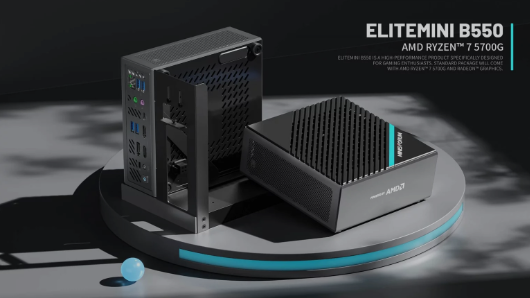Xiaomi Fitness Tracker: Your Ultimate Companion for a Healthy Lifestyle
Introduction
In the era of technology, fitness tracking devices have become increasingly popular, helping individuals monitor their health and achieve their fitness goals. Xiaomi, a renowned tech company, has made significant strides in the fitness tracking market with its range of innovative and affordable devices. In this blog post, we will explore the Xiaomi Fitness Tracker, highlighting its features, functionality, and the benefits it offers to fitness enthusiasts. Whether you are a seasoned athlete or someone looking to adopt a healthier lifestyle, the Xiaomi Fitness Tracker is designed to assist you on your wellness journey.

- Introduction to Xiaomi and its Fitness Tracker Lineup
Xiaomi, a Chinese multinational electronics company, has gained a strong reputation for producing high-quality and affordable consumer electronics. With a focus on innovation, Xiaomi has ventured into the fitness tracking market, offering a range of devices designed to help individuals monitor their fitness activities, track vital signs, and improve overall wellness.
Xiaomi’s fitness tracker lineup includes various models, each catering to different needs and budgets. These trackers combine stylish designs, advanced sensors, and user-friendly interfaces, making them popular choices among fitness enthusiasts worldwide.
- Key Features and Functionality
The Xiaomi Fitness Tracker boasts several features that contribute to its popularity and efficacy. Here are some of its key features:
a. Fitness Tracking: Xiaomi Fitness Trackers are equipped with sensors that measure steps taken, distance traveled, calories burned, and heart rate. These metrics allow users to track their progress, set goals, and make informed decisions about their fitness routines.
b. Sleep Monitoring: The tracker monitors sleep patterns, including duration, quality, and stages of sleep. This feature provides insights into sleep quality and helps users make adjustments to improve their overall well-being.
c. Heart Rate Monitoring: The built-in heart rate monitor accurately tracks heart rate during workouts and throughout the day. This data enables users to optimize their exercise intensity, monitor recovery, and maintain a healthy heart rate zone.
d. Waterproof Design: Many Xiaomi Fitness Trackers are water-resistant, allowing users to track their activities even during swimming or other water-based exercises. This feature adds versatility to the device and ensures it can withstand various fitness activities.
e. Smartphone Connectivity: Xiaomi Fitness Trackers sync seamlessly with smartphones via Bluetooth, enabling users to receive notifications, control music playback, and access additional features through dedicated mobile applications.
f. Long Battery Life: Xiaomi Fitness Trackers are known for their impressive battery life, often lasting several days or even weeks on a single charge. This extended battery life ensures uninterrupted tracking and reduces the need for frequent recharging.

- Benefits of Xiaomi Fitness Tracker
The Xiaomi Fitness Tracker offers numerous benefits that can significantly impact an individual’s fitness journey and overall well-being:
a. Enhanced Fitness Monitoring: By tracking various metrics such as steps, distance, and calories burned, the Xiaomi Fitness Tracker provides users with a comprehensive overview of their daily activity levels. This information empowers individuals to set realistic goals, monitor progress, and make adjustments to their fitness routines for optimal results.
b. Heart Health Management: With its built-in heart rate monitor, the Xiaomi Fitness Tracker enables users to track their heart rate during workouts and detect any abnormalities. This feature is particularly valuable for individuals with specific heart health concerns or those seeking to maintain a healthy heart rate range during exercise.
c. Sleep Quality Improvement: The sleep monitoring feature of the Xiaomi Fitness Tracker helps users gain insights into their sleep patterns and identify areas for improvement. By understanding sleep quality and making necessary adjustments to sleep habits and routines, users can enhance their overall well-being and energy levels.
d. Motivation and Accountability: The Xiaomi Fitness Tracker provides real-time feedback and progress updates, serving as a constant reminder and motivational tool. Seeing progress and staying accountable to fitness goals can significantly improve consistency and dedication to a healthy lifestyle.
e. Affordable and Accessible: Xiaomi Fitness Trackers are known for their affordability, making them accessible to a wide range of individuals. Their cost-effective nature ensures that users can enjoy the benefits of fitness tracking without breaking the bank.

- Conclusion
The Xiaomi Fitness Tracker is a powerful and affordable tool that can revolutionize your fitness journey. With its comprehensive tracking capabilities, intuitive user interface, and long battery life, the device offers an excellent balance between functionality and affordability. Whether you are a fitness enthusiast or someone seeking to adopt a healthier lifestyle, the Xiaomi Fitness Tracker provides the necessary insights, motivation, and accountability to help you achieve your wellness goals. Embrace the power of technology and take charge of your fitness with the Xiaomi Fitness Tracker, your ultimate companion for a healthy lifestyle.



















